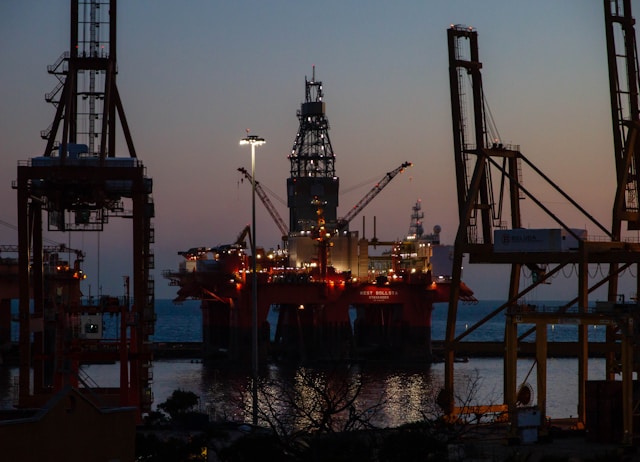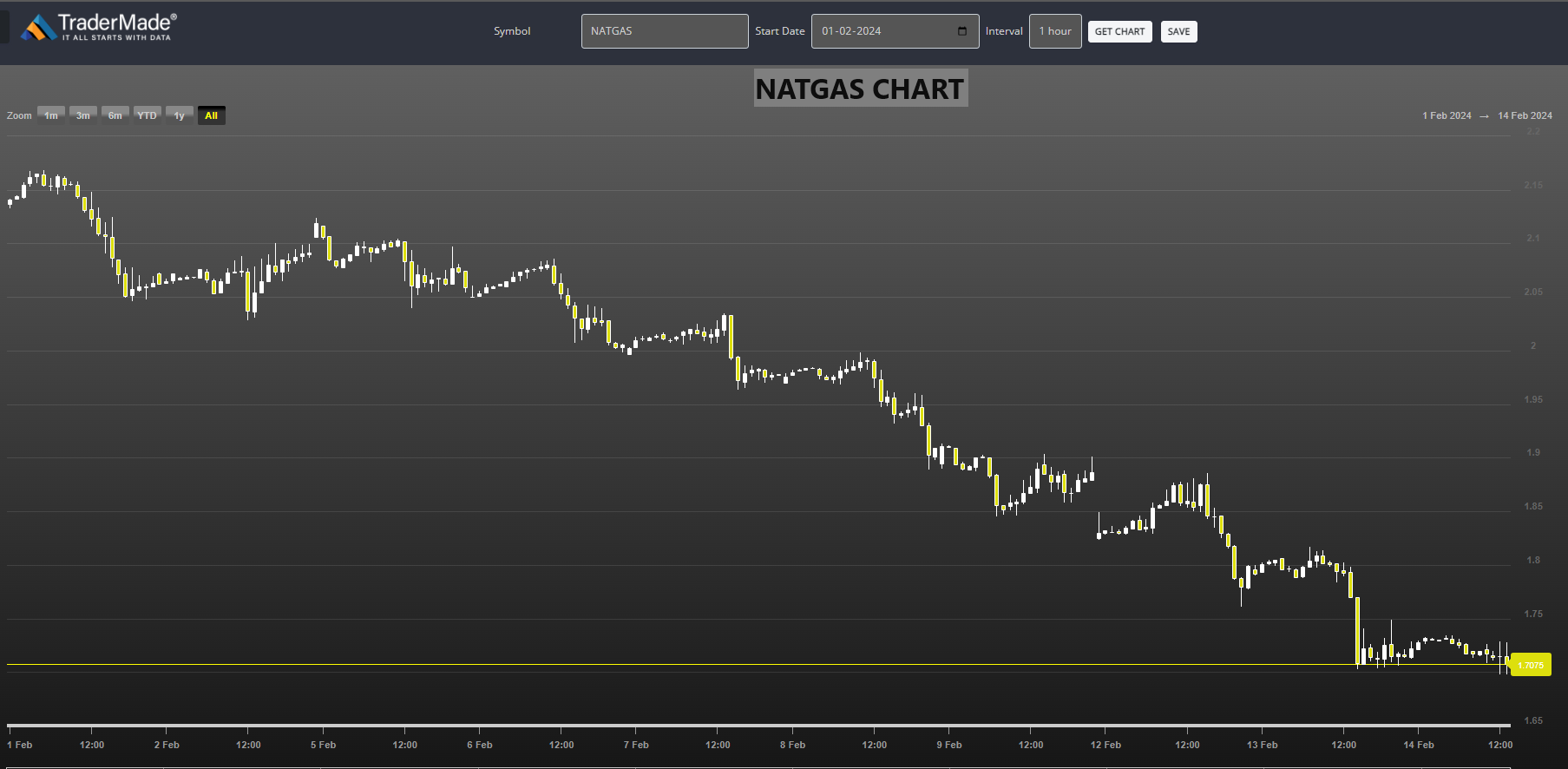
Energy Markets Contrast: Oil Shines, NATGAS Sinks
London: 14 February 2024 (TraderMade): In a tale of contrasting fortunes, the energy markets are experiencing opposite ends of the spectrum. Oil prices are finding support from optimistic demand forecasts and declining inventories.
However, Natural Gas (NATGAS) plunges deeper into a multi-day slump. Dive in to unpack the key drivers shaping these contrasting trends and uncover what lies ahead for these volatile commodities!
OPEC Forecast Fuels Optimism
- Global oil demand may robustly grow in 2024 & 2025, exceeding expectations (according to OPEC's monthly report).
- This bullish forecast outweighs concerns about US inflation and potential Federal Reserve rate hikes, which could dampen economic activity and fuel demand.
US Inventory Drawdowns Support Prices
- Sharp declines in gasoline and distillate fuel stocks in the US indicate strong demand, further bolstering oil prices.
- Kazakhstan's commitment to compensate for January's overproduction by adhering to OPEC+ production cuts ensures market stability.
Geopolitical Tensions Add Uncertainty
Ongoing conflicts in the Middle East and Russia-Ukraine continue to influence oil prices, injecting an element of risk into the market.
Natural Gas Slump Persists Amidst Bearish Factors
Eight Consecutive Days of Losses: Natural gas prices dive another 20% since the beginning of February, reaching a low of $1.71 per MMBtu.
Shell Downgrade Dents Demand Outlook: The company predicts a substantial decrease in Liquefied Natural Gas (LNG) demand by 2040, contributing to bearish sentiment.
Stronger US Dollar Weighs Heavy: Hot US inflation data prompts expectations of delayed Fed rate cuts, strengthening the dollar and impacting commodities like natural gas.
European Storage Concerns: While some tightening in European gas prices suggests a focus on restocking for winter, the need for 5% more LNG supply compared to 2023 adds pressure.
Warm Weather Ahead: Unseasonably warm temperatures expected in Europe further dampen demand for heating gas.
Natural Gas Plunges: Chilly Outlook or Warm Reality?
Natural gas (NATGAS) has been on a downward spiral, shedding over 17% since 1 February. Here's a breakdown:

Starting strong: 1 February opened at $2.0635 but closed slightly lower at $1.9775 on 7 February.
Downward spiral: The next few days witnessed a steady decline, reaching $1.8865 on 9 February and $1.799 on 12 February.
Touching rock bottom: Yesterday (13 February) saw the lowest close yet at $1.7145 and currently trades around $1.693.
This persistent decline begs the question: what's driving the chill in the natural gas market? Several factors could be at play:
- Mild winter: Warmer-than-usual temperatures across key consuming regions have reduced heating demand.
- Storage surplus: Ample gas stockpiles from last season dampen demand for new production.
- Shifting energy landscape: An increase in renewables and alternative heating sources adoption could influence the long-term demand outlook.
- Economic slowdown: Concerns about slowing global growth could dampen overall energy demand, including natural gas.
While the short-term trend seems bleak, the future of natural gas remains uncertain. Upcoming weather patterns, storage levels, and broader economic developments will be crucial in determining if this is a temporary blip or a sign of a more structural shift in the market.
Summary
While oil prices navigate geopolitical headwinds, strong demand forecasts and inventory drawdowns offer support. Natural gas, however, faces a confluence of bearish factors, including Shell's outlook, a stronger dollar, and mild weather forecasts. Both markets remain susceptible to unexpected developments, requiring close monitoring by investors and industry players.


